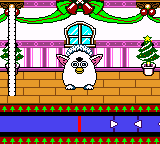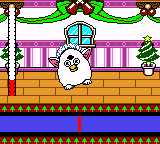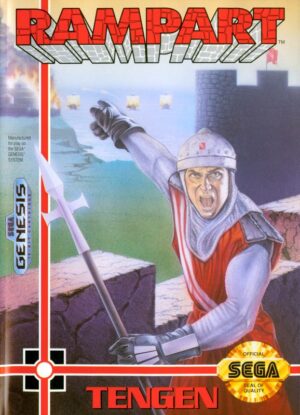Retro Replay Review
Gameplay
Dancing Furby greets players with a straightforward yet addictive rhythm-based challenge. As a Furby, your mission is simple: match each scrolling button prompt to the beat, shaking and shuffling your way through each track. The timing windows range from perfect “noo-loo” hits to acceptable “e-day” taps and cringe-inducing “boo” misses, all delivered in authentic Furbish exclamations that add a playful, toy-like charm to every session.
The game’s core loop is intuitive, borrowing mechanics from classic rhythm titles while injecting Furby-specific personality. Each successful note lights up your Furby’s dance moves on screen, rewarding precise timing with enthusiastic twirls and vocal praises. Conversely, missed prompts earn sharp “boo” shrieks, spurring you to refine your sense of rhythm or risk watching your pastel-colored dancer sulk on stage.
Stages are organized around familiar melodies—Twinkle Twinkle Little Star, Für Elise, and other popular tunes—providing a family-friendly setlist that appeals to both young players and nostalgia-seeking adults. Clearing a song not only boosts your score in “noo-loo” counts but also triggers an innovative toy–game interaction: by aligning your Game Boy’s infrared port with a real Furby’s forehead port, you transmit the learned tune directly to your physical toy, prompting spontaneous warbles of Für Elise at unexpected moments.
Performance-based progression introduces an unlocking system where hitting higher score thresholds grants access to new Furby characters—spotted, striped, and lozenge-faced variants—offering visual variety and extra incentives for completionists. With escalating difficulty and diverse Furby designs, Dancing Furby manages to keep its simplistic concept feeling fresh throughout multiple playthroughs.
Graphics
Visually, Dancing Furby adopts a pastel-colored palette that mirrors the fluffy aesthetic of the titular creatures. Background stages range from vibrant disco floors to candy-colored living rooms, each serving as an energetic backdrop for your furry avatar’s dance routine. The environments are simple yet charming, ensuring that players focus on rhythm prompts rather than overly flashy visuals.
Character animations stand out as the game’s graphical highlight. Each Furby model exhibits distinct movements—from ear wiggles to synchronized footwork—responsive to your input accuracy. Perfect “noo-loo” hits trigger celebratory flips, while “boo” errors cause adorably embarrassed postures, lending the toy-like dancers a personality that transcends their pixelated forms.
The user interface is clean and unobtrusive, featuring a clear horizontal timing bar at the bottom of the screen with iconic arrow prompts. Color-coding helps differentiate note types, and subtle screen shakes accompany high-combo streaks to amplify the sense of impact. Menu screens employ simple icons and Furby silhouettes, maintaining thematic consistency without overwhelming younger players.
Despite the Game Boy hardware limitations, Dancing Furby delivers smooth frame rates and well-defined sprites that rarely stutter even during complex sequences. While purists may crave more detailed backgrounds, the minimalist approach effectively underscores the game’s focus on rhythm gameplay and toy interactivity.
Story
Though Dancing Furby does not boast an intricate narrative, it weaves a lighthearted premise around the idea of autonomous toy robots learning to dance and speak. You step into the fluffy feet of a Furby, eager to master human rhythms and earn the approval of both in-game audiences and your real-world toy companion.
The game’s progression simulates a journey of musical education: each cleared stage represents a new lesson absorbed by your Furby. The ultimate reward—teaching your physical Furby to warble Für Elise via infrared connectivity—cements the illusion of genuine mechanical learning, creating a playful meta-story that blends virtual achievements with tangible results.
Character variety introduces subtle storytelling elements as well. Choosing between spotted, striped, or lozenge-faced Furbies hints at the quirky individuality of each toy model, encouraging players to unlock and collect them all. These variations are less about deep lore and more about reinforcing the idea that every Furby has its own dancing flavor.
Special in-game comments in Furbish during performances add whimsical flavor to the experience. Whether your Furby coos “woo-teh-loh-wah-boo!” at the start or critiques your timing mid-song, these vocal interjections inject personality and light narrative beats, making each rhythm session feel like a mini-concert with its own furry frontman.
Overall Experience
Dancing Furby offers a unique blend of rhythm action and toy-focused innovation. Its uncomplicated mechanics make it accessible to newcomers and younger players, while the calibration of timing windows ensures a sufficient challenge for seasoned rhythm gamers. The novelty of teaching songs to an actual Furby through infrared coupling sets it apart from contemporaries on the Game Boy platform.
Despite its technical simplicity, the game’s charm lies in its presentation and interactivity. Colorful stages, expressive animations, and Furbish sound effects create an atmosphere that never takes itself too seriously. Collecting and unlocking different Furby models adds replay value, transforming each clear into a step toward completing your in-game dance troupe.
Potential buyers looking for a kid-friendly, rhythm-oriented diversion will find Dancing Furby an endearing choice, particularly if they already own a Furby toy. The integration between hardware and software feels ahead of its time, offering a tangible reward for in-game accomplishments. Even without the infrared feature, the core gameplay loop remains engaging.
In sum, Dancing Furby stands out as a quirky rhythm game that leverages the nostalgic appeal of Furby toys. It’s a delightful pick for families, collectors, and anyone curious about the fusion of physical and digital play. With playful tunes, charming visuals, and a novel connectivity gimmick, it’s a hidden gem worth exploring on a retro Game Boy.
 Retro Replay Retro Replay gaming reviews, news, emulation, geek stuff and more!
Retro Replay Retro Replay gaming reviews, news, emulation, geek stuff and more!









Reviews
There are no reviews yet.